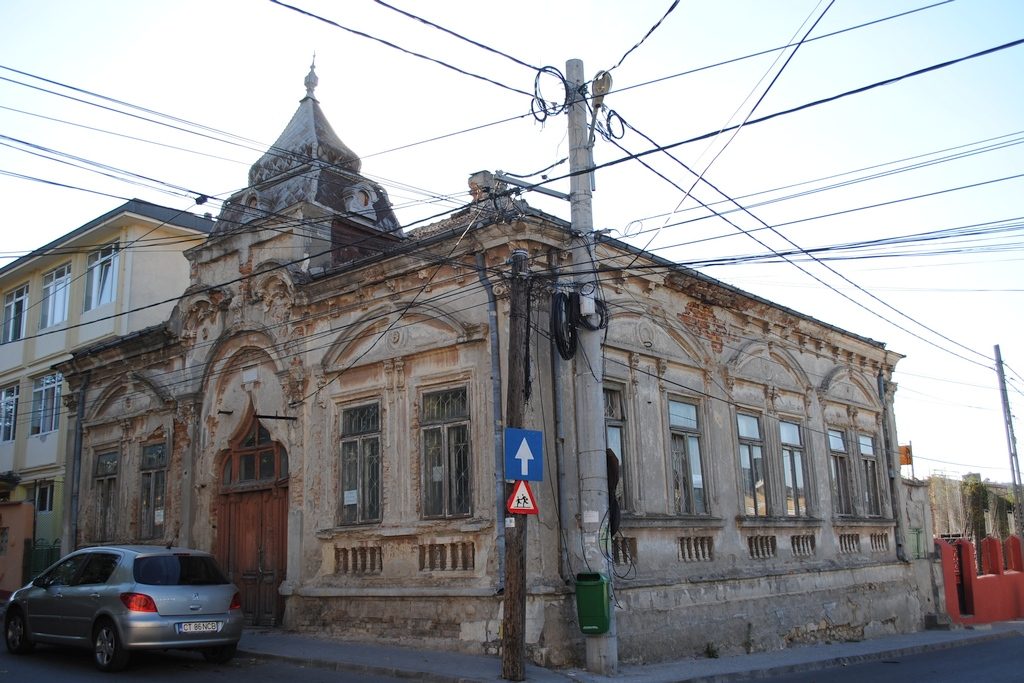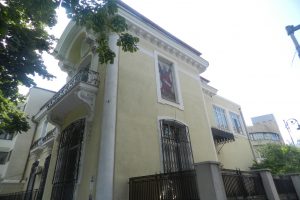

The Memorial House of Murad G. Ali is registered on the list of the historical monuments of the county of Constanța. The building was built in the year 1906.
In the year 1262, an army of Turk soldiers got down in the mountain north of Dobrogea. They were commanded by Sari Saltuk Dede, the dervish sent with the mission of spreading the Islamic religion. It was happening before the outstanding ascension of the Ottoman Empire. Dobrogea was back then a territory of nobody, almost not populated, under the possession of the Byzantine Empire at south, but occupied at north by the Golden Horde. The Dervish Sari Saltuk Dede was the Baba for the new community of Muslims from Dobrogea. The warriors of Baba were the founders of a legacy hard to erase. Because of their camp, the establishment Vicus Novus (the New Village) from the north of Dobrogea became Babadag, meaning the “Mountain of Baba”. At Babadag, the place where Sari Saltuk Dede sleeps, for centuries, his eternal sleep is a patrimonial monument. It was built in 1484 by the sultan Baiazid, in the honor of the dervish who brought the Islam on a new land. Baba’s Mausoleum is a tourist objective which the city is proud of. At the festivity which marked its restoration, on the 26th of September 2007 there attended including the Turk premier Recep Tayyip Erdogan. Not far from Baba’s mausoleum there rests another army leader, Gazi Ali Pașa, who raised a mosque which bears his name today. The place of worship is watched over by the Kalaigi drinking fountain, at which the tired pilgrims of the journey in the droughty Dobrogea freshen themselves up. Babadag was some time ago the capital of Dobrogea. At the end of the years 1600 it was moved here for two years (1677 – 1678), from Silistra, the residence of the pashalic. The establishment had 100.000 inhabitants, 400 stores, inns, schools, seminaries, mosques – an urban center in great force.
A landmark for the Muslims from Dobrogea was the Independence War from 1877. It meant the escape out of the Ottoman occupation and the entrance under the Romanian administration. For the Muslims it was the moment in which they lost the supremacy, finding themselves committed to a Christian state. After 1878, named the California of Romania, the multi-ethnical Dobrogea was going to enter in a colonization process, which will disadvantage the Muslims which already owned properties.
Among the communities confronted with fundamental changes, there appeared the immigration thought in the places of origin: Turkey or Crimea. The wish of finding their cultural cradle – the identity space, as it is named by the researchers – was embraced by the Turkish – Tatar community.
The principal unease for the Muslims from Romania was finding the space in which the community would be able to keep its fundamental guiding marks: the religions, the language and the habits. If they remained in Dobrogea, this would have meant the fact that this was the land which they considered to be their country. In 1913, King Carol I inaugurated the grand mosque from Constanța, as a sign of appreciation for the “loyal Muslim community”. As an acknowledgement, the Muslim made a very rare gesture: they named the Mosque “Carol I”. The name was kept until present.


